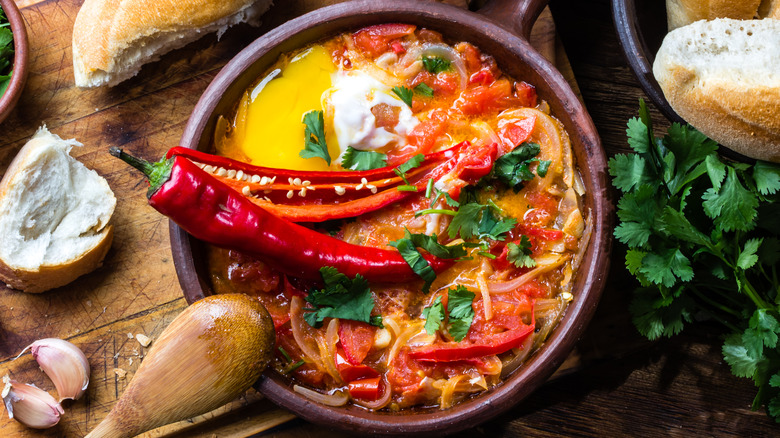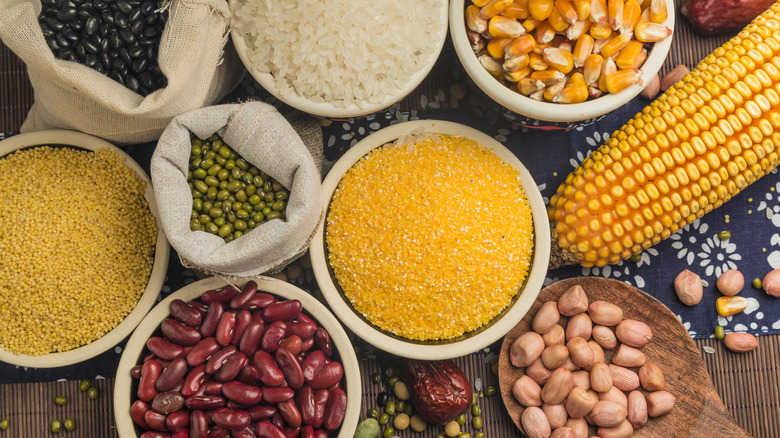The Fundamentals Of Latino Cuisine
National Hispanic Heritage Month is from September 15 to October 15, and what better way to get to know a culture than through its food? We might be a little biased here at Mashed, but nothing exudes a culture's storied history more than its cuisine. With it being our next-door neighbor, Mexico has made a big impression in the U.S. with its food. But that's just the tip of the iceberg — there's a lot more to Latino cuisine than tacos and quesadillas. Besides, a lot of dishes (like chimichangas) that we think of as "Mexican" foods were actually invented in the U.S.
Despite the variety of dishes across Latino cultures, there are some common staple ingredients — in particular, rice, corn, and beans. Rice is a common side dish, and you'll find it everywhere in Latino cuisine, from Mexico's arroz rojo (red rice) to Puerto Rico's arroz con gandules (rice with pigeon peas). Beans are a great source of plant protein and essential to dishes like Cuban black beans or Brazilian feijoada (black bean stew).
But corn (aka maize) is likely the most important staple that's prominent in the cuisines of Central and South American countries and Mexico, whether it's served in the form of tortillas, arepas, pupusas, tamales, or other foods. Latino cuisine also includes meat of all varieties, such as pork, beef, chicken, and seafood, as well as many regional ingredients.
Other staples of Latino cuisine
The variety found in Latino cuisine can be attributed to the historical diversity of the Americas. Indigenous influences, as well as those of African peoples and Europeans — particularly the Portuguese and Spanish, who colonized most of the region — are present. In addition to beans and corn, many other pre-Hispanic foods were cultivated by the Indigenous peoples of the Americas. Some notable examples we see in Latino cuisine today include roots like potatoes (native to Peru), sweet potatoes, yams, and cassava (known as yuca to most Latin Americans), as well as fruits like tomatoes, squash, and avocado.
Chili peppers are eaten both fresh and dried, and spicy chili peppers in particular are popular in Mexican cuisine. Cacao is another important ingredient that was cultivated by Indigenous peoples for drinks and food. Cacao, chili peppers, and corn are also the basis for Mexican mole sauce. In Latino-Caribbean cultures, tropical ingredients like mango, papaya, coconut, citrus fruits, and plantains are other common staples. For example, Puerto Rico's mofongo is made from mashed plantains, and ceviche is raw seafood cured in citrus juices. Meanwhile, Cuban mojo is a traditional sauce made with sour orange juice that's often paired with meats like roasted pork or chicken and sides like yuca.
Latino cuisine celebrates bold flavors, cultural influences, and culinary traditions handed down across generations. To ring in National Hispanic Heritage Month, why not add authentic tacos or iconic Peruvian foods to your dinner rotation?

